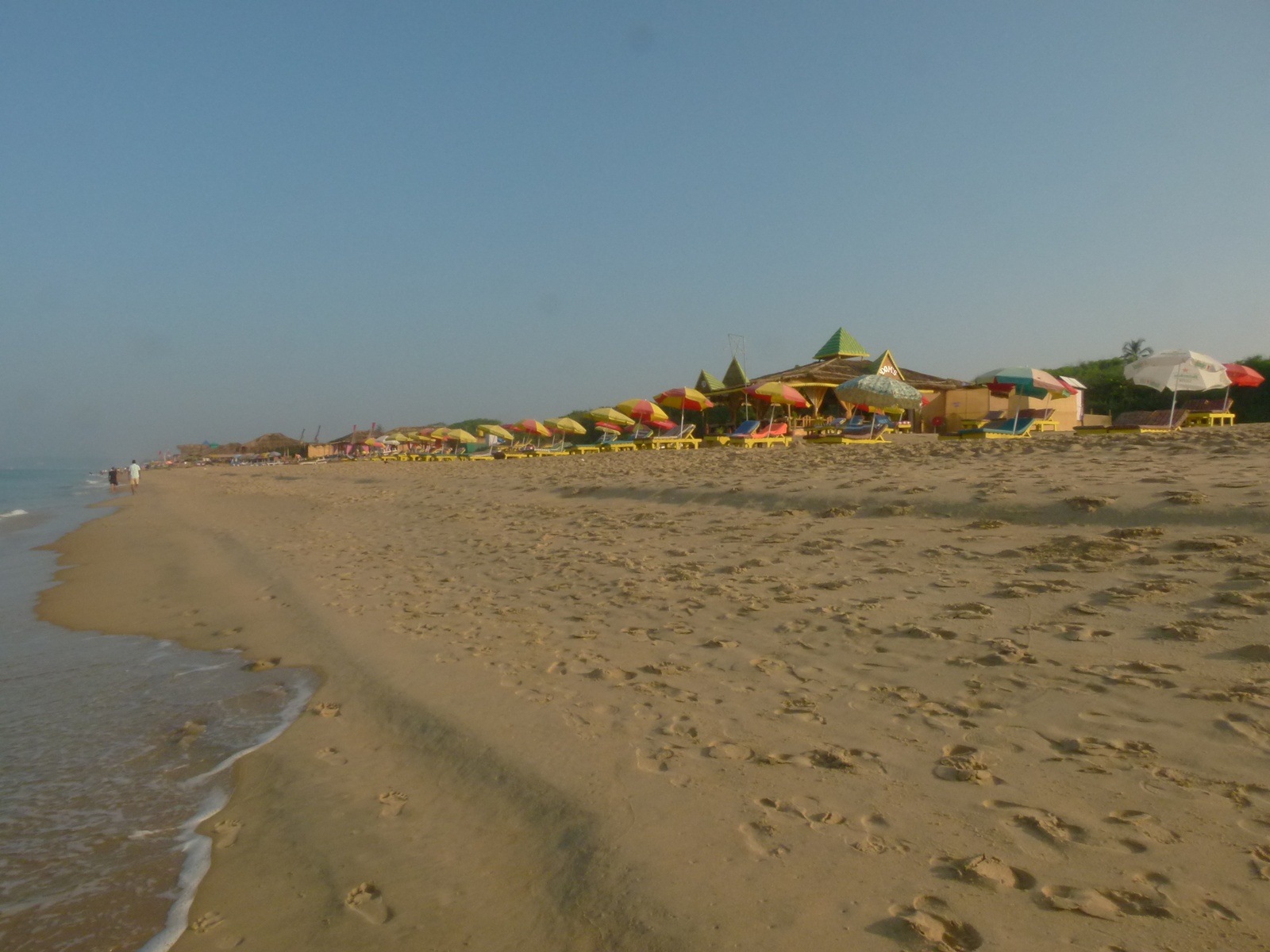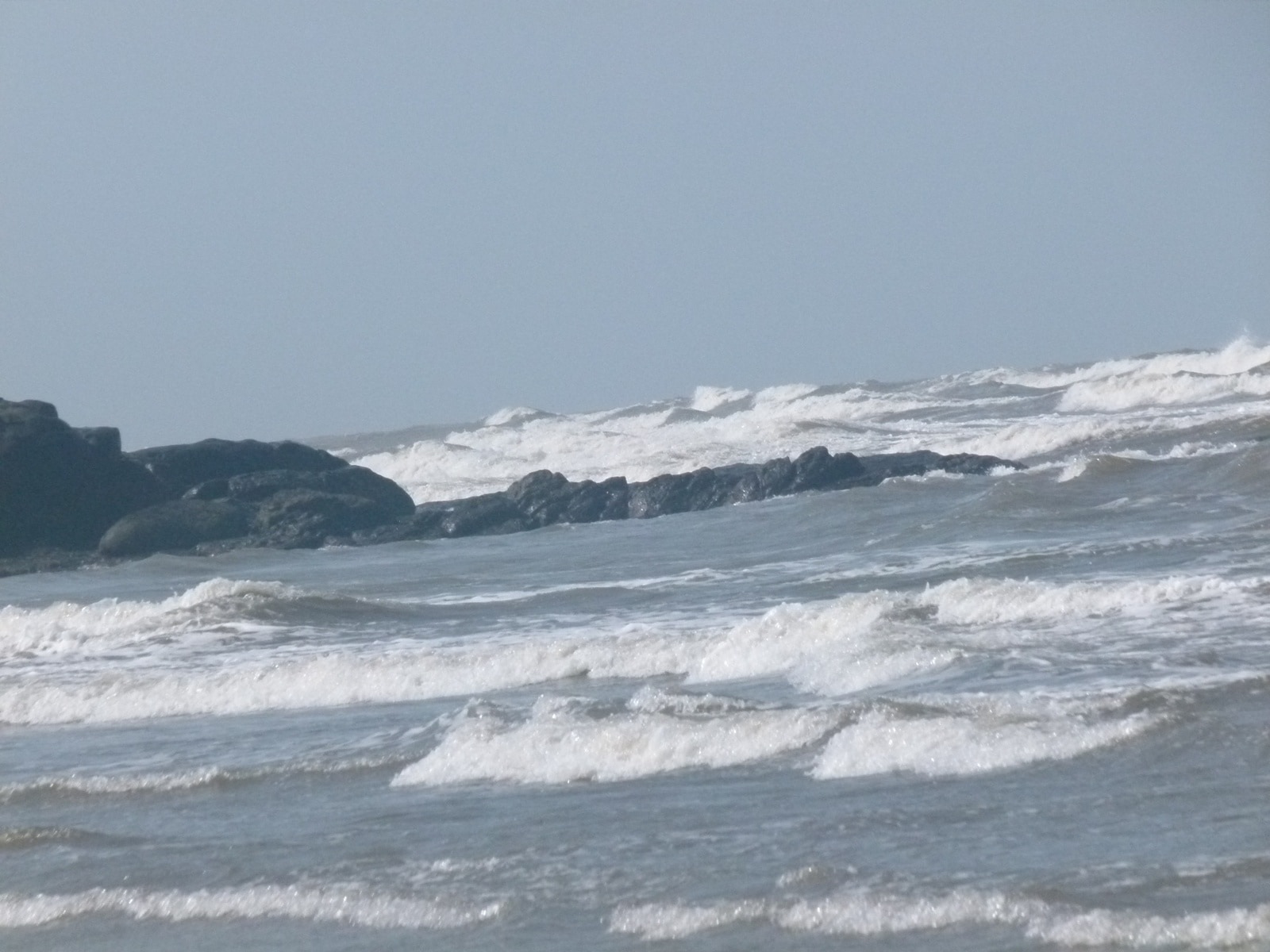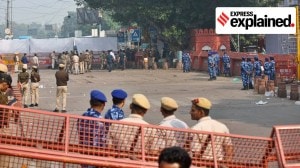It’s raining in Goa — be careful, very careful on its beaches
The ocean is a completely different beast at this time: it's ranting and raving, sending spume and spray high in the air – nothing well-mannered about it
 Calm winter sea and beach (Candolim) (Photo credit: Ranjit Lal)
Calm winter sea and beach (Candolim) (Photo credit: Ranjit Lal)For the last several years, I’ve visited Goa every winter to escape Delhi’s asphyxiating pollution, depressing fog and icy cold. And every time it’s been like a benediction: the clean, clear air, the greenery all around and the ready smiles of the locals and expat visitors who leave their dank grey countries to spend the winter here. I loved the way you could drive from a swanky cosmopolitan little town, complete with mall, gym and spa into densely forested country or wide open countryside within the space of 10 minutes – almost like shape-shifting.
And then, of course, there is the piece de resistance – the sprawling golden beaches that have made this little state so famous. The sea here is so well-mannered: lacy wavelets lap the shoreline enabling little children to lie down happily on their tummies and look for shells and starfish. The water is clear as gin: and you grin as you watch hermit crabs get into a punch up over property right at your feet. Shells gleam as if freshly lacquered: cream, gold, and mauve, as do sea-polished pebbles which look like jewels. As the tide retreats politely, it leaves pools in which other crabs lurk, waiting like assassins for tiny fish that may have got left behind.
The ocean itself dresses in different blues, depending on the depth I suppose: from turquoise to deep sapphire and the multi-coloured fishing boats ride the waves with aplomb. It is an ocean that breathes gently – but even so you can feel its incipient power as the tide begins to roll in once more, swishing about your calves, politely indicating that, perhaps, it would be prudent to move a little more shore-wards. You watch with envy as swimmers go in shoulder deep, until they are whistled out by lifeguards patrolling the beach. The rollers splinter on the rocks, but not with enough force to dislodge stubborn crabs stalking about on top of them.
The beach itself is wide and it can be quite a trudge from the low tide mark (where you are tide-pooling) to the shacks where you will enjoy your breakfast while watching dragonflies poised on the wind and Brahminy kites patrol up and down. There are herons, stints and sandpipers too stalking about the rocks and scuttering about on the sand as they deftly pick up invisible breakfasts from underfoot. Sand bubbler crabs have made their rangoli patterns all over the beach and you silently apologise to those whose work you have been forced to step on and obliterate.
 Keep a keen eye out on the waves charging up the beach ahead of you, narrowing the strip of walkable sand (Photo credit: Ranjit Lal)
Keep a keen eye out on the waves charging up the beach ahead of you, narrowing the strip of walkable sand (Photo credit: Ranjit Lal)
Ah, but then you are told, you don’t know what you’re missing: you absolutely must visit Goa in the rains! Sure a lot of the bars, restaurants and beach shacks will be closed, but it’s so much less buzzy, with none of those throbbing boom boxes and with little traffic. And as for the greenery…coming from an arid semi-desert, it’ll make your eyes pop! Also there are always days between the downpours when you can go walk about.
So there you are, and again you’re wondering, ah but what about the beaches? All the beach shacks are closed so you’ll just have to wander out on to the beach from wherever you can. The wind, you notice, is trying to bowl you over and there’s a deep-throated dragon roar coming from the ocean side. You stand at the edge of the embankment and the first surprise hits you. It’s supposed to be low tide but the waves are roaring and leaping towards the embankment, leaving just a narrow strip of beach which is walkable. Hmm, so when the tide is in, the sea must be leaping at and over the embankment itself, maybe swishing around the very table where you normally had your breakfast!
And judging by where the fishermen have hauled their boats that indeed seems to be the case. You think of those two girls sailing around the world in their tiny yacht tackling the mightiest oceans in these conditions and wonder…
This ocean is a completely different beast to the peaceful soul you met just a few months ago. It is ranting and raving, angry, sending spume and spray high in the air as it roars in, driving along glowering bands of clouds stretched across the horizon.
Ah, you think naively, this must be great for tide-pooling: the sea must have yanked any number of interesting creepy crawlies out of the deep and tossed them on to the beach. Not a chance: there’s not a tide-pool anywhere and every shell occupant must have been ground into sand when subject to that violent ocean and those serrated rocks. Or else dived deep and clung on for dear life to rocks under water or buried themselves deep under the sand.
 Angry monsoon tide trying to swallow up the whole beach! (Photo credit: Ranjit Lal)
Angry monsoon tide trying to swallow up the whole beach! (Photo credit: Ranjit Lal)
But you will have your walk nonetheless – you remember long ago walks on beaches near Mumbai during the monsoon, where the retreating tide left a wide swathe of varnished sand for you to wander on and daydream! But here, you keep a keen eye out on the waves charging up the beach ahead of you, narrowing the strip of walkable sand even more. There is something malicious about this sea today, you feel a plot brewing. A sixth sense makes you turn around – and lo and behold, the waves behind you are also swooshing and curling their way up the beach. Together, ahead and behind you, they are trying to trap you in a pincer-movement and suck you back into their depths! You do a prompt right turn and head straight for the embankment, from where you can watch this devious trap close over nothing.


- 01
- 02
- 03
- 04
- 05





























